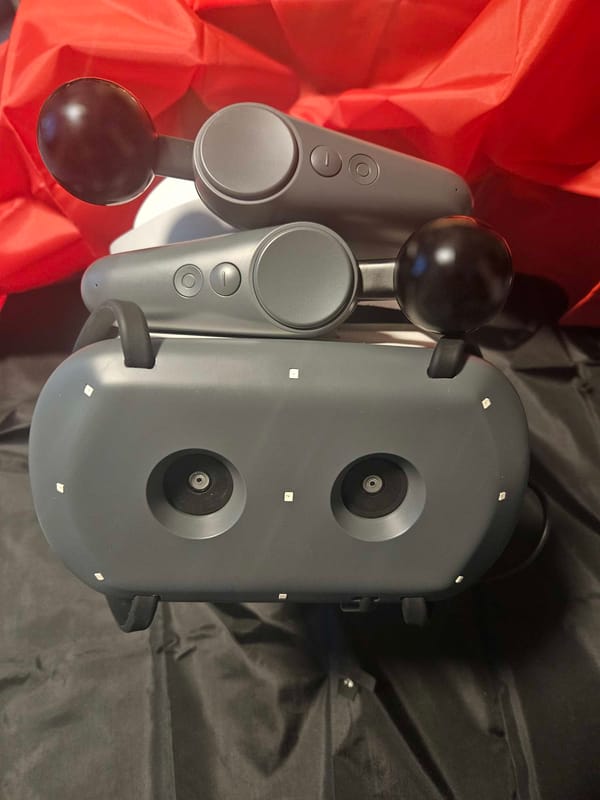Working in VR Remotely
I am still working on some of my larger projects, so I decided to update this blog with a smaller post in the meantime to keep up this habit.
Recently, I went away from home to see distant friends and touch grass. It was only for a few days, but I wanted to still be able to spend my evenings (where I had my own room to sleep) to do a bit of work on my desktop. And here is where I got to thinking. I have a Quest 3, it supports Bluetooth keyboards and mice. I could set up a VPN to my home and connect to my desktop running Virtual Desktop, right? Is it really that simple?
Actually, yeah, kinda.
There's not much to be said about the Quest 3. Its a good headset, and you can score it on eBay or Craigslist for a bit cheaper than the asking price of 500 USD. While you could do this with a Quest 2 (or Pro), the lower resolution makes working with virtual monitors a little too blurry. Don't get me wrong, for me personally the Quest 3 is only on the mere edge of usable, but its good enough.
I do want to chime in about the keyboard though. Quest headsets support "tracked" keyboards that can be tracked as a 3D model in space. This feature as it stands is completely useless. First off the range of supported keyboards is abysmal, and you either have to use a really bad keyboard, or a decent one that is out of manufacturing and you have to buy a scalped one from Ebay. I did actually spend the money to get a Logitech K830 though, which has decent key travel and has a touch-pad (which the Quest also supports if you don't want to lug around a separate mouse!), but I paid almost a 100 dollars on Ebay for it, which was WAY too much. But the bigger issue is the tracking quality sucks, with it stuttering quite often, and most apps, such as virtual desktop, don't even support it properly anyways. In the end, its far better just to use the XR pass-through of the quest 3 instead and use any keyboard of your choice.
The more challenging part of the setup was setting up a VPN. I set up a WireGuard instance on my home router directly, which certainly made it more convenient for me. I personally suggest WireGuard due to its improved efficiency and speed, but OpenSense is second best due to how much more established it is. I would stay away from L2TP VPN due to security concerns, however. One I got that working, on my quest 3 I opened up FDroid (which you can install as an APK) and installed WG Tunnel. This app makes it pretty easy to import a WireGuard profile and start it up, and the Quest 3 on firmware 68 had no issues loading right into it.
After activating my VPN from the quest, I had issues connecting to Virtual Desktop. Turns out, rather counter-intuitively, you have to actually turn OFF "Allow remote connections".

And once all that was set up, I could remote into my PC, and I was able to stream 2 1440p monitors on high presets just fine! Honestly, this works so effectively I may want to spin up some VMs explicitly for VR work so I don't need to leave my desktop on all the time...
This will also be affected by your WiFi connection speed on where ever you are at, so perhaps hotel WiFi may crap out on you, but thankfully I was lucky. I still am intrigued by other solutions such as the keyboard computer, but that has yet to be seen.
I am still working on some larger projects in relation to EEG, AI, VR, and of course ARF that's still taking time to cook. I did recently put out another section of "Analyzing Neural Time Series Data" that may also be worth a peek (this marks 20% of the book done!).
Until next time!
